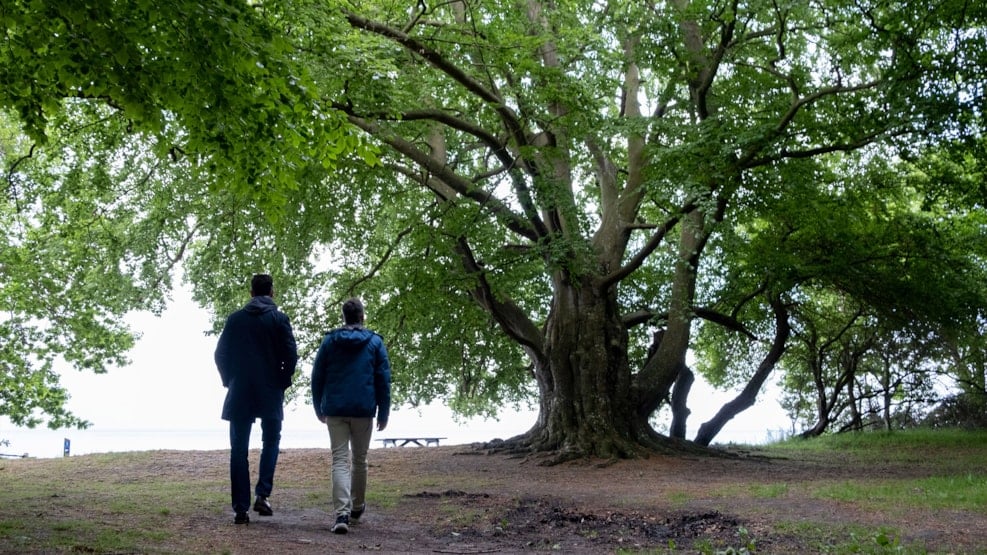
Oehlenschlaeger beech
‘There is a lovely land, it stands with broad beeches, near the salty eastern shore...’. These famous words and the rest of the national anthem are said to have been written by Adam Oehlenschlaeger under the mighty beech tree in Stengade Forest east of Tranekær.
Oehlenschlaeger beech
Whether this is true or not is unknown, but we do know that Adam Oehlenschlaeger, the poet behind our national anthem, has been to Langeland several times, so there is a high probability that he was at least inspired to write the well-known melody on Langeland.
It is documented that Oehlenschlaeger was on Langeland in the summer of 1804, after which he published a collection of poems about this trip. However, the poem to the national anthem was not published until 1819 for a national song competition. But Oehlenschlaeger has several connections that link him to Langeland. The Ørsted brothers Hans Christian and Anders Sandøe, whose father was a pharmacist in Rudkøbing, were his tutors and were also the ones who got Oehlenschlaeger to study law at the University of Copenhagen. Not least, his younger sister Sofie married A.S. Ørsted.
Finding the beech
You'll find Oehlenschlaeger's Beech right down by the water in Stengade Forest. The beech stands in the ‘clearing’ that the old foresters called ‘fæstpladsi’. The area is ideal for a little rest where you can enjoy the view of the sea in the shade of the large beech tree. It is also possible to continue north, either along the beach, where you can reach Stengade Skanse, which offers several historical stories.
Adam Gottlob Oehlenschlaeger
Born in 1779, he grew up at Frederiksberg Castle, as his father was the steward of the castle.
Considered one of the great artists of the Danish Golden Age, a period when Danish cultural life flourished - music, literature, art, research.
Take good care of the beech tree
Oehlenschlaeger's beech tree is important to the island. To ensure the tree's survival for as many years as possible, climbing the tree or walking on its roots is not permitted.